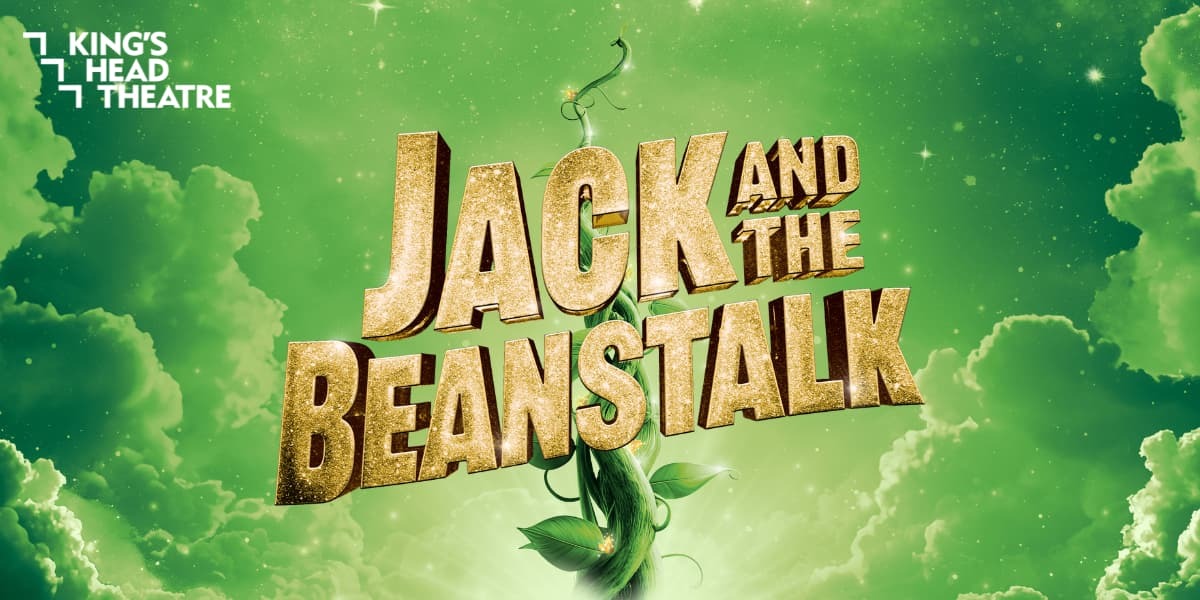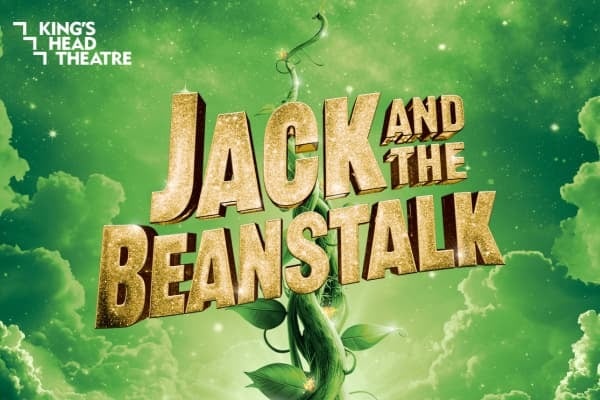
Jack and the Beanstalk Tickets
Islington's best family panto is back for its second year! Oh yes it is!All ages welcome! Kids under 3 go free.
Performance dates
23 November 2025 - 4 January 2026
Run time: 2hrs
Includes interval
- Show info
- Performance Times
- News
Heroes don't always wear capes... but ours occasionally wears a cowpat! Young milkman Jack finds himself thrust into the limelight when his mum's dairy farm, Angel Delight on Udder Street - and Islington itself - is threatened by a greedy old giant! Armed with only a can of squirty cream and a talent for puns, Jack is determined to do battle with the giant... But can he persuade the townsfolk of Islington - and his mum - that he's up to the job?
Join Jack on his moo-vellous journey up the beanstalk, as he battles to save the town and rescue his legendairy Moosical Theatre-loving bovine bestie Cowpatti Lupone from the clutches of the fearsome giant!
This show ain't semi-skimmed: it's a full-fat riot of slapstick, show tunes, and spectacle!
King’s Head Theatre returns for their second annual panto after 2024’s five-star hit Cinderella. There’s sure to be fun for all the family in this thrilling musical adventure in the clouds - celebrate the holidays by making North London’s fabulous family panto part of your yearly tradition!
Latest Jack and the Beanstalk News

Features
Pantomime terms and techniques
Last year, the London Palladium brought us the hit holiday pantomime, Robin Hood. Now, in its tenth year, the West End venue is at it again with an all-new reimagining of Sleeping Beauty. In celebration of the new panto adaptation of this beloved British classic, which is set to premiere this Christmas, we've compiled a list of all the essential mime vocabulary, terms and techniques to help you better appreciate this exquisite art form.
What does “Pantomime” mean? (etymology & origins)
The term pantomime, often shortened to panto, comes from the Latin ‘pantomimus’, meaning “gestures used to support a theme.” The related word mime comes from the Greek ‘mimesis’, meaning “to imitate an activity.”
Historically, a mime performer was called a mummer, a term from Middle English ‘mum’, meaning “silent.” Both pantomime and mime share roots in the art of wordless storytelling, but they developed into distinct performance styles.
Mime vs pantomime: what’s the difference?
Mime is a universal art form often seen in street performances and busking, if you’re catching a pantomime at the London Palladium, you might get a glimpse of one near Covent Garden. Classic mime routines include: pretending to be trapped in an invisible box, climbing an imaginary rope or ladder, battling strong winds with an umbrella (a comedy favourite).
While both mime and pantomime rely on silence, gesture, and movement, their purpose differs: Mime focuses on a single, specific action. Pantomime tells a complete story, often made up of a series of mimes, with a clear beginning, middle, and end.
Essential pantomime & mime vocabulary
If you’re learning pantomime or mime, these are key terms you’ll encounter:
Tableau – A “living picture” where characters remain frozen in place, often used in plays during scene transitions.
Gesture – Any movement of the body to express an idea (e.g., miming unscrewing a jar lid). Consistency is vital, imaginary objects must remain the same size to preserve the illusion.
Cross – Moving from one side of the stage to the other.
Illusionary walk – Walking in place to create the illusion of travel, done in two styles: Profile Walk: Seen best from the side and Pressure Walk: Seen best from the front or back.
Exaggerated resistance – Making an action more defined and sharper to suggest weight, tension, or struggle (e.g., tugging a rope or lifting a heavy object).
The art of exaggeration
In both pantomime and mime, facial expressions are just as important as movement. For example: angled eyebrows + open mouth = surprise, squinted eyes + deep frown = effort or strain.
These amplified expressions help the audience “feel” the invisible world the performer is creating.
6 Jun, 2019 | By Nicholas Ephram Ryan Daniels
BLACK FRIDAY SALE
Valid on selected performances from 23 November 2025 - 2 January 2026. Book by 8 December 2025.
